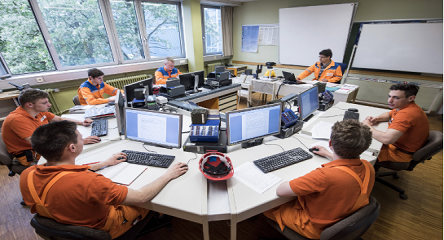Recently I was asked the following by a client:
I’m working on our work management process and scheduling. I have a question about how you deal with emergent work.
We acknowledge that there will always be some emergent work, and we consider that it may be (for example) 10% of the overall work. When you write and execute a schedule, how do you allow for emergent work? Or do you allow for emergent work?
- Do you write the schedule to 100% excluding allowance for emergent work, and when an emergency comes up, break the schedule, and bump a scheduled work/task to another day/week; or
- Schedule all work, and make an allowance in the schedule for 10% emergent work; or
- Do you handle emergency work another way?
The Options
This is a very good question. There are several trains of thought here.
Before considering options, let’s agree that we stay focused on the day-to-day routine scheduling of work. Shutdowns are handled in a different manner altogether and hopefully with a very high level of discipline – that is a conversation for another day.
Option 1: Schedule to 100% of labor availability, and when an emergency occurs, handle it in a formal way and make a change to the schedule. – YES
Option 2: Schedule to something less than 100% of labor availability – say 80% or 50% then you would have extra people standing around that you could dispatch to the emergency – horrible idea. – NO
Option 3: Some say schedule to something more than 100% availability – say 110% – this is based on the idea that are labor estimates and durations are generally exaggerated and we do not want our people standing around looking for something to do – again a bad idea. – NO
So, the correct answer is schedule to 100% of available labor each week (of course subtracting out known events such as safety meetings, toolbox talks, lunch, and breaks as they occur each day).
Here is why this is the best approach:
If we schedule anything less than 100% of available resource time, we will be underutilizing our people. This is bad for morale, and some could make an argument that you don’t need all those people – this is of course probably not true, but why take the risk. Post the results of one bad wrench time study and the accountants will be knocking at your door trying to save a little money by reducing headcount. When we schedule 100% labor availability, we are justifying headcount.
The problem with the idea of setting aside available labor to handle emergencies is that you do not know when the emergencies occur – that is why they are called emergencies. It is of course ok to schedule some portion of your people with work that can be easily paused when an emergency occurs so that they can be dispatched to the emergency, ready to return to the original job later.
For example, if you have a couple of people doing rebuilds in the shop so that they can stop and respond to an emergency that might be more acceptable than having everyone stuck inside of a tank performing vessel inspections.
If you schedule to 100% of labor availability and break the schedule in a formal way (more on that in a minute), then you must document why you broke the schedule. Keep in mind, breaking the schedule is a very normal and acceptable activity.
Once you break the schedule (in a formal way), get together next week, and briefly discuss all the emergencies from last week, why they occurred, and ask “is there something we should be doing differently to prevent these emergencies”.
Keep the discussion short and sweet. If you do not break the schedule in a formal way and document it, you will never have the conversation, and will never get any better. This situation is related to a manufacturing term known as the “hidden factory” where a whole bunch of work got done off the books.
Finally, we need to measure. Percent (%) schedule compliance is a great way to measure, but let’s be reasonable. Measure it honestly and if we are currently at 55%, so be it. Then let’s set a goal of 60% and celebrate when we reach it. Then let’s raise the goal 65%. My concern is that people who consistently report very high schedule compliance (85% or higher) are not being honest with themselves. Remember, 100% means you had no breakdowns that week — an unlikely scenario.
Handling Emergencies in a Formal Way
Here is what I mean by a “formal way”. Get used to emergencies (“schedule breakers” or “break in work:” are other terms you may use), they are a way of life and will continue to occur for the rest of your working life and beyond. My hope for you is that these emergencies become smaller in size and impact due to our improvement efforts, but rest assured they will always occur.
Changing the schedule to address an emergency is acceptable and normal. We must not lose any sleep over it, it happens. But we must handle it in the correct way:
- We need a gatekeeper (one person) who will look at the request, make sure that it is in fact a qualified emergency, and authorize the change to the schedule. It is best if this person works for operations and not the maintenance department. We seem to get a better commitment to the repairs and the time it will take to do things right when this happens.
- We need a set of criteria for when we will, and when we will not, break the schedule. Just a simple set of rules that we can agree upon. Let’s take as much of the opinion out of the situation as possible.
- If we add something to the schedule, we must take something off. It’s simple math. We need to document this change in a simple way and talk about it next week. I recommend that the first 5-10 minutes of your weekly scheduling meeting be a formal discussion on % schedule compliance from last week, what were the schedule breakers, what got dropped, is there a way to avoid a repeat in the future – what is our simple fix. If you can do this week in and week out, it will force you to deal with the nagging chronic issues that we suffer from repeatedly. Fixing them is within our capabilities, we just need to focus.





